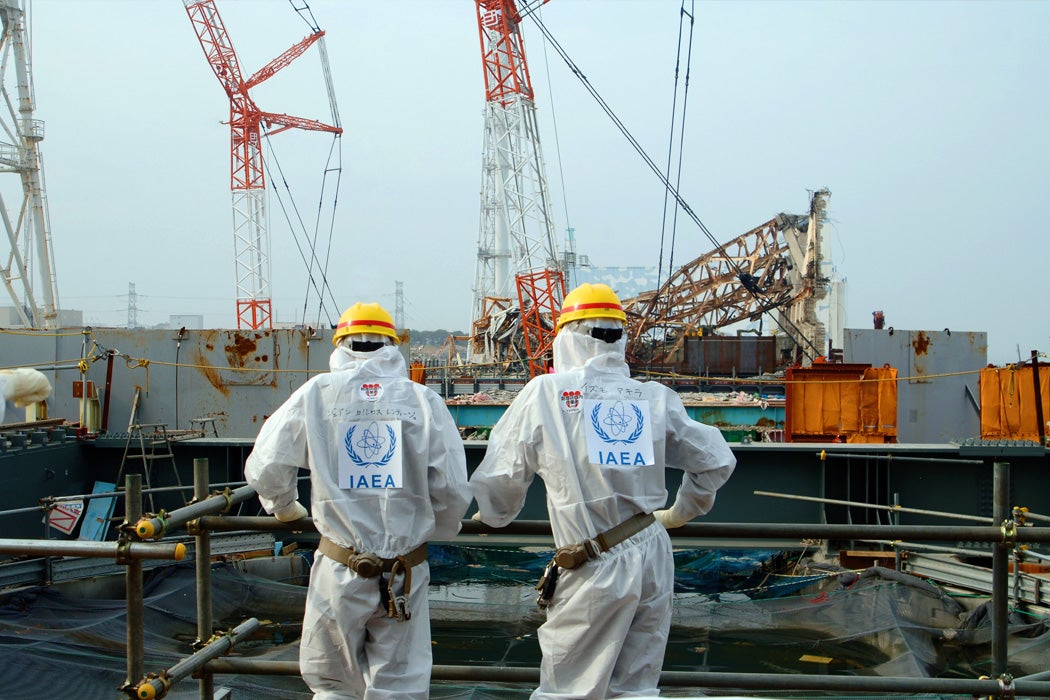It’s been eight years since the 2011 Tōhoku earthquake and tsunami damaged the Fukushima Daiichi nuclear power plant. The resulting damage led to hydrogen explosions and a partial meltdown, releasing radiation into the surrounding area. After workers’ brave efforts stabilized the situation, they began to focus on long-term cleanup. The cleanup recently reached a major milestone when workers began removing nuclear fuel rods for disposal. But how do you really clean up a nuclear accident?
The difficulty of the task depends on the severity of the accident. According to Richard Stone in Science, when it came to Chernobyl, the worst nuclear accident in history, containing the damage was paramount. The Chernobyl explosion led to a massive fire, spreading a radioactive plume across Europe. Extinguishing the fire was the immediate priority. Workers ran onto a fiery roof to shovel burning radioactive material down into the ruined core, while aircraft dumped clay and sand on the fire. Finally, liquid nitrogen was pumped in to cool the fuel from a tunnel dug underneath the core. There was kittle time to consider long-term containment: the entire structure was buried under a massive concrete “sarcophagus” and then the entire region was permanently evacuated. A new structure was recently erected over the sarcophagus so the sarcophagus, itself radioactive, could be safely disposed of.
The Fukushima accident was not as catastrophic as Chernobyl, but the challenges remain daunting. Workers have had to contend with the radioactive fuel rods themselves, containment ponds full of contaminated water, plus the contaminated ruins and surrounding soil. Since workers must limit radiation exposure even with protective gear, workers can only spend limited time around the fuel rods. Utilizing a machine, workers will remotely control transfer the rods into an underwater cask before sealing, cleaning, and transporting the containers to a storage building.
Weekly Digest
The major challenge, according to Science Asia correspondent Dennis Normile, is the sheer volume of contaminated material. Most of the airborne radiation and some of the water spread into the ocean, leading to closures of fisheries. While this process was far from ideal, it did quickly dilute the radiation. However, millions of tons of topsoil and other material had to be carefully scraped away. The contaminated material was literally stacked in garbage bags until it could be stored in special clay-lined landfills.
To deal with the massive volume of material, a variety of novel ideas and technology have been tested. Astronomers used equipment normally used to detect cosmic radiation to try and find the most radioactive areas. New technology, including chemical and biological processes, were employed to separate out the radioactive material and reduce the amount that needed special disposal. While many of these techniques seem to work, many people remain uncomfortable with the idea of living or working near decontaminated fill.







